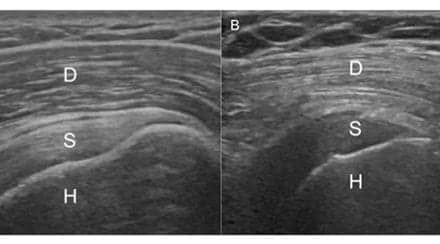Researchers at Chicago-based Northwestern University and St. Louis-based Washington University School of Medicine have devised a sticker that clinicians can use with a basic ultrasound device to monitor patients’ organ and tissue health. This sticker changes shape in response to the body’s pH levels, providing early detection of complications like anastomotic leaks post-surgery, which clinicians can observe in real-time through ultrasound imaging. Their study will be published in Science.
Currently, no existing methods can reliably and noninvasively detect anastomotic leaks—a life-threatening condition that occurs when gastrointestinal fluids escape the digestive system. By revealing the leakage of these fluids with high sensitivity and high specificity, the noninvasive sticker can enable earlier interventions than previously possible. Then, when the patient has fully recovered, the biocompatible, bioresorbable sticker simply dissolves away, bypassing the need for surgical extraction.
The paper outlines evaluations across small and large animal models to validate three different types of stickers made of hydrogel materials tailored for the ability to detect anastomotic leaks from the stomach, the small intestine, and the pancreas.
“These types of defects cannot be seen directly with ultrasound imaging tools.” Northwestern’s John A. Rogers, who led device development with postdoctoral fellow Jiaqi Liu. “They also escape detection by even the most sophisticated CT and MRI scans. We developed an engineering approach and a set of advanced materials to address this unmet need in patient monitoring. The technology has the potential to eliminate risks, reduce costs and expand accessibility to rapid, noninvasive assessments for improved patient outcomes.”
“Right now, there is no good way whatsoever to detect these kinds of leaks,” adds gastrointestinal surgeon Chet Hammill, PhD. “The majority of operations in the abdomen—when you have to remove something and sew it back together—carry a risk of leaking. We can’t fully prevent those complications, but maybe we can catch them earlier to minimize harm. Even if we could detect a leak 24- or 48-hours earlier, we could catch complications before the patient becomes really sick. This new technology has potential to completely change the way we monitor patients after surgery.”






